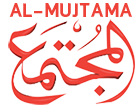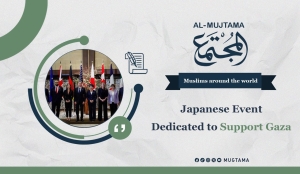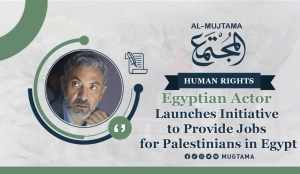Gaza... A History of Resilience in the Face of Invaders
December 16, 2024
The city of Gaza has steadfastly endured the successive trials of time, with its name changing alongside the nations that contended for it. The Persians referred to it as "Hazatu," while the Hebrews named it "Gaza," meaning "the strong." The Canaanites called it "Hazani," and the Egyptians named it "Gazato." Arabs referred to it as "Gaza Hashim," in honor of Hashim bin Abd Manaf, the grandfather of the Prophet Muhammad (peace be upon him), who died and was buried there while returning from his trade to the Hejaz.
The history of the city of Gaza, like that of all of Palestine, is a glorious history preserved and understood by successive generations. Gaza has maintained its Arab name up to the present day, emphasizing its Arab identity despite the repeated occupations that the city has endured.
Gaza was the last obstacle faced by Alexander the Great in his march toward Egypt following the Battle of "Asos." Alexander stood before its formidable walls, unable to breach them for two months and was wounded during the siege in 330 B.C. When he eventually occupied it, he took the commander of its Arab garrison, tied him to horse-drawn chariots, and paraded him around the wall until he was killed. On another occasion, when the Maccabees besieged it, King Harith IV of the Nabataeans came to its aid, causing the Maccabees to flee and lift the siege.
Gaza served as a base for Amr ibn al-As before his campaign into Egypt, and it was also a stronghold for the armies of the Ayyubids, King Salih Ismail, and Al-Nasir Dawood. During October 1244, Rukn al-Din Baybars led the sultan's army into a fierce battle against the Frankish armies, known as the most catastrophic calamity to befall the Crusaders after the Battle of "Hattin" (584 AH/1187 AD) on Palestinian soil. This battle was referred to by Frankish historians as the "Second Battle of Hattin," with estimates of around thirty thousand of their soldiers killed, and eight hundred captives were taken to Egypt.
It is said that the people of Gaza were those whom the Children of Israel feared; (They said, "O Moses, indeed in it are a people of formidable strength, and indeed, we will not enter it until they leave it; and if they leave it, then we will enter.") (Al-Ma'idah: 22). They were unable to enter the Holy Land again until this miserable time. The spirit of resilience and resistance in this city is as ancient as history itself, as demonstrated by Swiss scholar Heinrich Liegl, who wrote a study titled "The Spirit of Ancient Resistance in Gaza." He stated that the spirit of resistance is not a product of the current age in this city, but rather a series of interconnected links, as this city possesses written documents dating back to the fifteenth century B.C. Among these is an account of what Polybius (120 B.C.), a king of the Seleucid Syria, did when he invaded Gaza, praising its inhabitants, their solidarity, and the courage they embodied in resisting the Persian invasion and standing against Alexander.
Before the Muslims opened Gaza, Arabs frequently visited it for trade. Among those who visited was Umayyah ibn al-Salt al-Thaqafi, and Hashim bin Abd Manaf, the grandfather of the Prophet Muhammad (peace be upon him), passed away there. His grave remains there to this day, giving rise to the name "Gaza Hashim."
Furthermore, the Prophet’s father, Abdullah bin Abd al-Muttalib, had also traveled to Gaza for trade. After returning from there to Hejaz, he fell ill on his way to Medina and died there.
When the Prophet's (peace be upon him) letter reached Emperor Heraclius inviting him to Islam, the emperor called for his sheriff and ordered him to look for someone from the tribe of Muhammad in Syria. The sheriff found Abu Sufyan bin Harb and a number of traders from Quraish in Gaza, who had come for trade. He took them from Gaza and sent them to Heraclius in Jerusalem. The account of the conversation that took place between them and Heraclius is famous and recorded in Sahih al-Bukhari.
Geographic Location and Its Strategic Importance
The Gaza Strip is the southern region of the Palestinian coast along the Mediterranean Sea. It is shaped like a narrow band located to the northeast of the Sinai Peninsula, extending over an area of approximately 360 square kilometers, with a length of 41 kilometers, while its width ranges between 6 and 12 kilometers. The Gaza Strip borders the occupied Palestinian territories to the north and east, while it is bordered by Egypt to the southwest.
The geographic location of the city of Gaza holds particular significance, as it is situated on one of the main trade routes of the ancient world, which began in Hadramaut and Yemen and ended in India. Gaza also has substantial military importance, as it serves as a link between Egypt and the Levant. Taking control of Gaza meant the beginning of domination over the war and trade routes between Asia and Africa. Furthermore, Gaza's distinguished location on the edge of fertile, fresh-water lands that immediately follow the Sinai desert had an impact on its existence, survival, and significance. It serves as the natural stopover for those coming from Egypt on their way to the Levant, as well as the last stop for those arriving from the Levant heading to Egypt. It is a meeting point for caravans before entering the wilderness, where they complete their supplies before crossing the desert on their way to Egypt.
Topography of Gaza
The Gaza Strip represents the southern parts of the coastal plain, and there are no particularly distinct topographical features of the strip. However, its southern, northern, eastern, and western sections can be differentiated. Its surface is generally flat, with a series of hills extending in the eastern part that rise above the general level of the surface. The Gaza Strip is cut by three valleys: the Gaza Valley, the Salqa Valley, and the Beit Hanoun Valley.
Gaza Under Ottoman Rule
After the defeat of the Mamluks by the Ottomans at the Battle of Marj Dabiq north of Aleppo in 922 AH / 1516 AD, the Levantine cities fell one after another without significant resistance from the Mamluk garrisons. The Ottomans then entered Palestine and crushed the remnants of the Mamluk forces at the Battle of "Jaljulia" near Ramla, leading to the complete control of Palestinian cities by the Ottomans. The Ottoman Sultan "Selim I" entered Jerusalem on Tuesday, 6 Dhu al-Hijjah 922 AH / December 30, 1516 AD.
During the Ottoman rule, Palestine experienced prosperity, witnessing significant development in all aspects of life. The Ottoman sultans were keen on reviving the Palestinian cities, especially Jerusalem. They constructed wide roads and worked on connecting Palestinian cities through the establishment of railway lines. The first railway line connecting the cities of Jerusalem and Jaffa was established in 1892.
Moreover, the Ottomans were diligent in laying telegraph lines with neighboring Arab countries and European cities, and they provided Palestinian cities with electricity. During the reign of Sultan Suleiman the Magnificent (1520 – 1566 AD), the Ottoman Tekiyeh (Tekiyeh al-Khaskiya Sultan) was established to house students of knowledge and to provide meals for the poor of Jerusalem, continuing its services even to this day.
The Ottoman Empire recognized early on the seriousness of the situations and conspiracies threatening Palestine, which became evident after the First Zionist Congress was held in the Swiss city of Basel in 1897. Therefore, the Ottomans stood as a barrier against Jewish immigration to Jerusalem, and Sultan Abdulhamid II, the last of the Ottoman sultans (1876 – 1909 AD), refused large financial incentives from the leader of the Zionist movement, Theodor Herzl, to sell Palestine while keeping it under Ottoman sovereignty, at a time when the state was in dire need of funds to settle debts and overcome economic difficulties amid enemy conspiracies.
Day 426 of the Israeli Genocide War on Gaza
December 06, 2024As the Israeli genocide war on the Gaza Strip enters its 426th consecutive day, the death toll from the war has risen to 44,580 martyrs and 105,739 wounded, according to the latest statistics released by the Ministry of Health in Gaza.
The Ministry of Health stated in a statement that the Israeli occupation army committed five massacres within 24 hours, with 48 martyrs and 201 injured arriving at hospitals as a result. It noted that there are victims trapped under the rubble that rescue and ambulance teams are unable to reach.
In recent hours, the Israeli occupation army continued to target shelters and bomb the tents of displaced persons. On Wednesday evening, it carried out a series of airstrikes on the tents of displaced persons in the Mawasi area of Khan Younis in southern Gaza, resulting in at least 20 martyrs and dozens of injuries.
This coincides with the ongoing Israeli army's commission of war crimes and horrific massacres against civilians, as well as attempts to displace residents from northern Gaza, which has been subjected to continuous military aggression for the 61st consecutive day.
In the south of the Gaza Strip, Israeli warboats opened fire last night off the coast of Khan Younis, following hours after the massacre in the Mawasi area, which mostly affected children and women.
Two martyrs also fell due to shelling from an Israeli drone targeting a group of Palestinians in Khirbat al-Adas north of Rafah in the southern Gaza Strip.
In Gaza City, occupation aircraft bombed the southern outskirts of the Sabra and Tal al-Hawa neighborhoods in the south of Gaza City.
The Civil Defense in the Gaza Strip announced that its crews rescued surviving children and retrieved the bodies of ten martyrs from homes that were bombed by the Israeli forces in the Tunnel area of Gaza City, where the bombardment led to a massacre with 25 martyrs, including children and women.
Three Palestinians were also martyred due to Israeli shelling targeting a group of families in the al-Shuja'iyya neighborhood east of Gaza City in the northern Gaza Strip.
In central Gaza, a number of martyrs and wounded were reported as a result of Israeli shelling that targeted a house near the Abdullah al-Zam mosque within the (5) camp in al-Nuseirat in central Gaza.
In the Al-Bureij camp, Israeli occupation aircraft carried out a violent raid on the tents of displaced persons in the courtyard of the "Abu Hamis" school, resulting in dozens of martyrs and injured individuals and the burning of 15 tents.
In northern Gaza, the Civil Defense Authority reported that occupation forces targeted the displaced after forcing them to evacuate from northern Gaza towards the city of Gaza. Meanwhile, three martyrs fell in an Israeli bombardment on a house behind Kamal Adwan Hospital in the Beit Lahiya project in northern Gaza.
In this context, Jonathan Fowler, the senior director of communications at the United Nations Relief and Works Agency for Palestine Refugees in the Near East (UNRWA), revealed that about 60,000 Palestinians in northern Gaza live under catastrophic conditions due to the ongoing Israeli siege for 62 days, surrounded by death on all sides.
Fowler pointed out that delivering humanitarian aid to the area is extremely difficult, as only 75 trucks of aid entered through the border crossings on November 27, despite the need for about 500 trucks daily to meet the needs of the population.
The agency's spokesperson explained that the situation in northern Gaza has become tragic due to a lack of food, medicine, and clean drinking water, noting that the residents of the enclave rely entirely on humanitarian assistance to survive. He added that access to the besieged area is still prohibited by Israel, causing residents to suffer day by day without receiving aid.
Fowler also warned, in an interview with Anadolu Agency, of the worsening risk of malnutrition, reminding that the area has not received any food supplies for more than 60 days, which could lead to many residents dying of hunger if urgent relief is not provided.
The UN official stated that people in this besieged area "will die of hunger. What can they do if they cannot access relief materials? There is essentially nothing to eat."
================
Has Gaza been left alone to drown?
November 28, 2024
In the midst of the explosive Palestinian scene, where chapters of Israeli aggression against Gaza continue relentlessly, a painful question arises: Has Gaza been left to drown alone in a sea of blood? Does Palestine still represent the essence of the Arab cause, or has the Arab nation chosen the path of complacency and submission?
The announcement of a ceasefire between Israel and Hezbollah, at this critical time, has raised several questions, most notably the fate of Gaza in the midst of this ongoing conflict, and to what extent can the nation rise united in defense of the Palestinian cause, the cause of rights and dignity.
Gaza has always been the frontline defense of the Arab nation, paying the price of resistance on behalf of everyone, besieged between violent Israeli aggression and an increasingly dark Arab silence. Every house destroyed by aircraft and every tear shed by mothers there is not just a Palestinian wound, but a wound of an entire nation that has abandoned its national and humanitarian duty.
The announcement of a ceasefire between Israel and Hezbollah, which came without achieving any tangible change on the Palestinian scene, added a sense of deception to many. Although such steps may be interpreted as a tactical maneuver to avoid wider regional escalation, they reinforce the feeling that Gaza has been left alone.
On the other hand, we must realize that the resistance in Gaza is not isolated from its surroundings, and although support may not always be public or sufficient, Arab peoples, even if their governments are restrained, still believe that Gaza represents the conscience and dignity of the nation.
The absence of unified Arab resistance is not a recent phenomenon, but a reflection of political fragmentation that has deepened over decades due to foreign domination and normalization. With every new normalization agreement, the gap between regimes and peoples widens, and the Palestinians' sense of isolation grows.
The real question we should be asking is not why unified resistance has been absent, but how can it be revived in the midst of this intertwined reality?
The road to unified resistance starts from within the Palestinian territories. The long struggle has produced differences in vision and means between Palestinian factions, but the biggest challenge lies in uniting the internal front to have one voice against the occupation. Historical experiences have shown that internal unity is capable of inspiring the Arab nation and uniting its ranks.
Arab peoples, despite all suppression and marginalization attempts, still see Palestine as their primary cause. With every protest or chant raised in the Arab world, the spiritual connection between the peoples and the Palestinian cause becomes evident. This popular awareness can serve as a basis for pressuring regimes to reclaim their historical role.
Any attempt to reach a unified Arab resistance requires a courageous confrontation with the escalating normalization wave. This confrontation is not just a rejection of agreements legitimizing occupation, but a defense of the honor of the nation and its right to determine its destiny. Building regional alliances between resistance forces in Lebanon, Palestine, and Yemen could serve as a model for building a unified Arab front against the occupation and its supporters.
Despite all the pain, Gaza remains an icon of resilience and unwavering will that knows no defeat. Every stone raised against the occupation, and every voice screaming for the truth, confirms that Gaza will not sink, because resistance is not just a weapon but an eternal idea in the hearts of millions.
Hope for Arab unity is still alive but requires bold steps starting from Gaza, where a new history for the nation is being written. Supporting Gaza now is not an option but a duty that tests the humanity of the world and the dignity of the nation. Resistance is not just the battle of Palestinians alone, but the struggle of the entire nation for justice, freedom, and dignity. As long as Gaza resists, the nation remains alive, and as long as the occupation persists, the path to liberation has not been closed yet.
Japanese Event Dedicated to Support Gaza
April 13, 2024The Islamic Center in Japan, in collaboration with Tokyo Mosque, organized a Palestinian Day last Saturday in support of Gaza, with wide participation aimed at raising awareness among the Japanese people about the Palestinian cause and the genocide committed by the occupation army in Gaza. During the event, donations for Palestine were collected, exceeding 1.6 million Japanese yen.
Yusri Al-Hamzawi, Director of Outreach and Education at the Islamic Center in Japan, stated that the Palestinian event was the third of its kind, continuing to support the Palestinian people. It was held at the Tokyo Mosque with broad participation from individuals, Islamic organizations, and Japanese visitors.
He announced that the total amount collected from donations and fees for using the venue and participating in the bazaar was approximately 1.6 million Japanese yen. Not to mention the donations sent through bank accounts, which will also be announced. Furthermore, the Turkish community raised 120,000 yen, and all donations will be handed over to the management of Tokyo Mosque to be sent to the campaign led by the Turkish Religious Affairs Authority to assist those affected in Gaza.
During the event, Dr. Reem Ahmed delivered a lecture about Palestine and the situation in Gaza, which received widespread interaction from the audience. Both the Qatari and Yemeni ambassadors were also in attendance.
Al-Hamzawi explained that the Palestinian Day included a bazaar that showcased a variety of products, including sweets, clothes, handicrafts, perfumes, and henna, along with presentations to introduce the Palestinian cause and its history.
He mentioned that there was a photo exhibition and a video presentation provided by a team from the Egyptian community, who announced their intention to donate a portion of their sales to support Gaza.
Moreover, the Muslim community at the Islamic Center in Tsukuba donated 165,000 Japanese yen to Gaza, while the Indonesian community contributed all their sales proceeds from the exhibition to Palestine.
Additionally, both the Islamic Center and the Egyptian community in Shim-Misato, which participated with two food tables, donated all their earnings to Palestine. The Syrian and Sudanese communities also contributed 20% of their exhibition earnings to Palestine.
-------------------------------------------------------------
Egyptian actor Fathi Abdelwahab called for assistance and job openings for Palestinians who are currently in Egypt on his official Facebook page.
Abdul Wahab mentioned how he gets letters from Palestinians stating their stories and specializations which will be publicized later and prospective employers could call them.
Supporting the cause
This was not the first initiative for the Egyptian actor, who had been keen to provide help since the beginning of October 7, 2023 ‘Al-Aqsa flood’ during Israeli war on Gaza, showing his solidarity with the Palestinian people against the long Israeli army massacres that lasted over five months.
In conclusion of 2023, Abdel Wahhab wrote through his account “I pray to all humanity that 2024 will be more equitable, compassionate, humane and peaceful so that we can witness with our own eyes an end to injustice towards Palestine. I want our people there to be freed from the tyranny of this cruel occupation.” He also commented on another war taking place in Sudan by writing “Gaza is yearning for peace”.
On November 17, 2023, he recited literary texts by the Palestinian poet Hind Joudeh, written after the “Al-Aqsa Flood,” and published them in a video on his Facebook account.
The Palestinian poet commented on the post and wrote, “Grateful to read my words with such closeness and belonging, and grateful for Gaza’s humanitarian voice to be heard. We hope that the war will stop and that Gaza and Palestine will live their Palestinianness without anger, injustice, intimidation, and the killing of its children and people. Long live a free, Arab Palestine.”
The Egyptian artist had previously published an audio clip of an Israeli soldier pleading with his commander, expressing his fear of the Palestinian resistance fighters by saying, “We cannot defeat them.” Fathi Abdel Wahab commented on it and wrote, “This is hilarious.”
Earlier, Abdel Wahab called for a boycott of the products of companies that support Israel and support for Egyptian products, and he published more than one post on his Facebook page to confirm that call.
He also asked his audience at the beginning of November to provide job opportunities for two Palestinian students at universities in Egypt after they lost contact with their families in Gaza.
Because of his posts in support of Palestine, Abdel Wahab’s Facebook page was banned, and he asked his fans to interact with him.
It is noteworthy that Abdel Wahab is participating in the Ramadan 2024 drama season in more than one work, as he presents the character of Nizam al-Mulk in the controversial series “The Assassins,” and the artist Hamada Hilal is also participating in the starring role of the fourth part of the series “Al-Maddah - The Legend of Return.”






